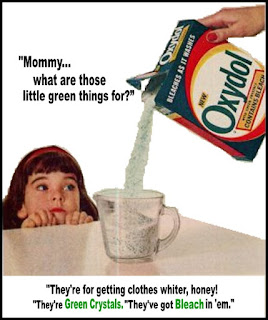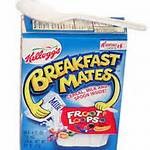INTRODUCTION
In the last two blogs (here and here), we looked
at (in general) an article USA Today published entitled “The 18 worst product flops of all time.” These
flops included:
1. Edsel
by Ford Motor Co.
2. Touch
of Yogurt Shampoo by Bristol-Myers Squibb
3. Apple
Lisa by Apple
4. New
Coke by Coca-Cola
5.
Premier smokeless cigarettes by RJ Reynolds
6.
Maxwell House Brewed Coffee by Philip Morris Companies
7. Harley
Davidson perfume by Harley Davidson Motor Co.
8. Coors
Rocky Mountain Sparkling Water by Adolph Coors Co.
9.
Crystal Pepsi by Pepsico
10. The
Newton MessagePad by Apple
11.
Persil Power by Unilever
12. Arch
Deluxe by McDonald’s
13.
Breakfast Mates by the Kellogg Co.
14. WOW!
Chips by Pepsico
15. Hot
Wheels and Barbie computers by Mattel
16. EZ
Squirt (colored) Ketchup by Heinz
17.
TouchPad by HP
18.
Google Glass by Google
In this blog we will focus on only one of these flops:
Crystal Pepsi (#9).
LEARNINGS FROM CRYSTAL PEPSI
The major innovation for Crystal Pepsi (introduced in 1992),
was that the color was taken out of the cola to make it clear. The novelty of
drinking clear cola succeeded for a short period, but once the fad ended, sales
vaporized. What went wrong?
Learning #1: Just
Because You Can, Doesn’t Mean You Should
First of all, we need to understand that not everything new
and different is desirable. Just because an engineer can make something happen
doesn’t mean it should be done (no matter how much it would please the
engineer). Being able to take the color out of a cola might be a cool magic trick,
but where is the lasting benefit to the consumer?
Does taking out the color:
- Improve the taste? No.
- Improve the drinkability? No.
- Improve the formula? No.
- Lower the Price? No.
About the only lasting
benefit of Crystal Pepsi was that the caffeine was taken out. But Pepsi already
had caffeine free versions (since 1982), and you don’t need to take the color
out to take the caffeine out. So this really wasn’t much of a lasting benefit…just
a novelty.
I remember when digital
wristwatches first came out. Because they were digital, it was possible to
engineer them to do all sorts of things that the old analog watches couldn’t
do. Therefore, many had a buch of additional functions added, like stopwatch,
24 hour military time, etc. They fell victim to to adding features, just
because they could.
The problem was that the
designers only put a couple of buttons on the watch, making it almost
impossible to figure out what combination of button pressings were needed to
make the functions work. Worse yet, all that confusion also made it nearly
impossible to figure out how to set the watch for the correct time.
It was like the old VCR
players that always blinked "12:00" because nobody could figure out how to set the
timer. You could tolerate that on a VCR, because the video tapes could still
run without a working clock display. But a watch without a working clock
display is worthless. The manufacturers would have been better off putting in
fewer features so that the primary function—telling time—would have been
easier.
In Today’s digital era, the
temptation to do more innovation than necessary is probably greater than ever
before. You can alter the code to make digital products do almost anything. The
only limit is your imagination.
However, instead of using
your imagination as the limit, you should use practicality as your limit. If
the added feature gets in the way, confuses the customer, or does not provide
lasting/desired benefits, don’t do it. Tell the engineers to back off.
Just as the trick of taking
the color out of cola did not lead to success, many computer engineering tricks
may not lead to success, either.
Lesson #2: Image Works Both Ways
An innovation can improve the
image of a brand. It can make a brand appear more up-to-date, cooler, more
visionary, more desirable. Apple has used the innovations of the iPod, the
iPhone and the iPad to enhance its image in this way.
Unfortunately, some “innovations”
work on image in the opposite direction. Inappropriate innovations can make a
brand appear out-of-touch, silly, or incompotent. Taking the color out of cola
was a negative image producer. The so-called benefit was silly. Nobody was
aking for it (out of touch). Will I appear out-of-touch and silly if I drink
Crystal Pepsi?
Other potential negative
image factors in Crystal Pepsi:
- A clear cola appears less potent than a colored cola. Who wants a perceived diluted cola?
- What was done to take out the color? Were harsh chemicals used or added? Did they put bleach in the cola? Clear colas may be more dangerous to drink.
- Was the core formula changed? Failure #2 was New Coke, where Coke fans were outraged because the traditional Coke formula was changed. Couldn’t the same outrage occur here?
Innovations can create many undesired secondary consequences
which outweigh the slight benefits of poor innovations. Be sure to look for
these undesired secondary consequences before introducing the product.
Lesson #3: Hidden
Innovations Rarely Inspire
The whole trick of Crystal Pepsi was in seeing the color
taken out of the cola. Unfortunately, most colas are sold in cans and are
usually consumed right from the can. You cannot see the “clearness” of the cola
inside the can. What good is a benefit you never see or cannot discern during
consumption?
 If you innovate, make sure the innovation is visible and
discernable. Oxydol detergent had the benefit of bleach already inside the
detergent. However, you couldn’t see the bleach, so consumers couldn’t feel the
benefit. Then Proctor & Gamble put little green crystals in Oxydol and told
people that the crystals were “proof” that Oxydol was different, and the
difference was bleach. After that, Oxydol became the #1 detergent in America
(until Proctor & Gamble decided to make Tide #1).
If you innovate, make sure the innovation is visible and
discernable. Oxydol detergent had the benefit of bleach already inside the
detergent. However, you couldn’t see the bleach, so consumers couldn’t feel the
benefit. Then Proctor & Gamble put little green crystals in Oxydol and told
people that the crystals were “proof” that Oxydol was different, and the
difference was bleach. After that, Oxydol became the #1 detergent in America
(until Proctor & Gamble decided to make Tide #1).
So, if you bother to innovate, make sure the customer knows
and provide some sort of visual confirmation to remind them of the innovation. Intel
was hidden inside computers and not getting much credit for their innovations.
So Intel made computer manufacturers put stickers on the outside of the
computer to let people know that there was Intel inside that computer. This
greatly improved the image benefits from Intel innovations.
SUMMARY
Crystal Pepsi teaches us that:
- Just because an innovation is possible does not mean that it is desirable;
- Poor innovations can damage a brand image at least as much as a good innovation can improve an image.
- To get the full impact of an innovation, it must be obvious to the consumer.







